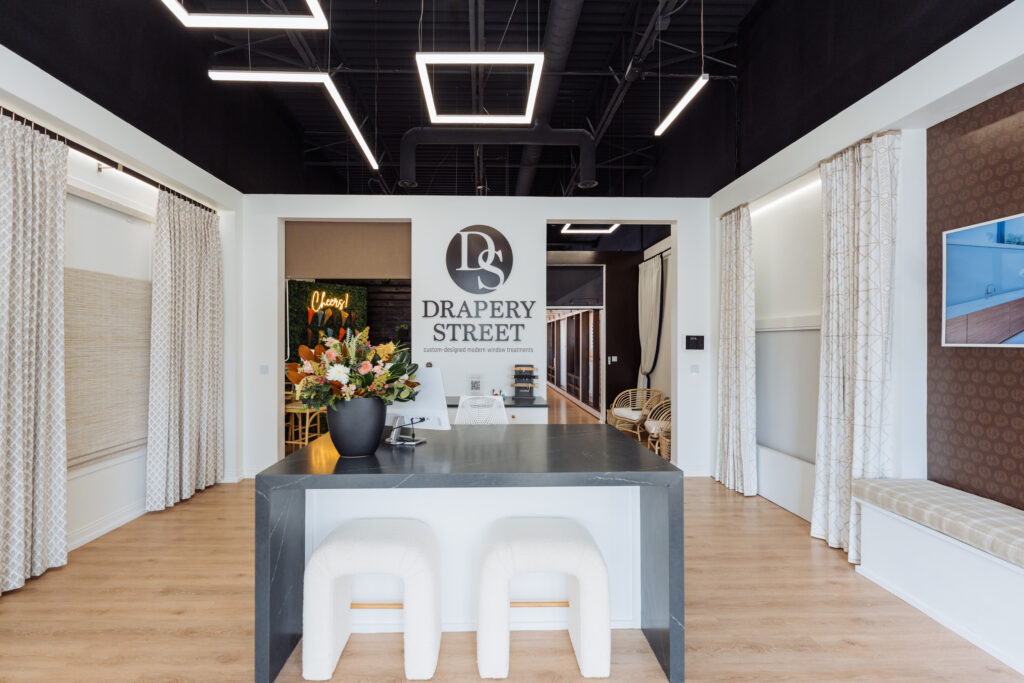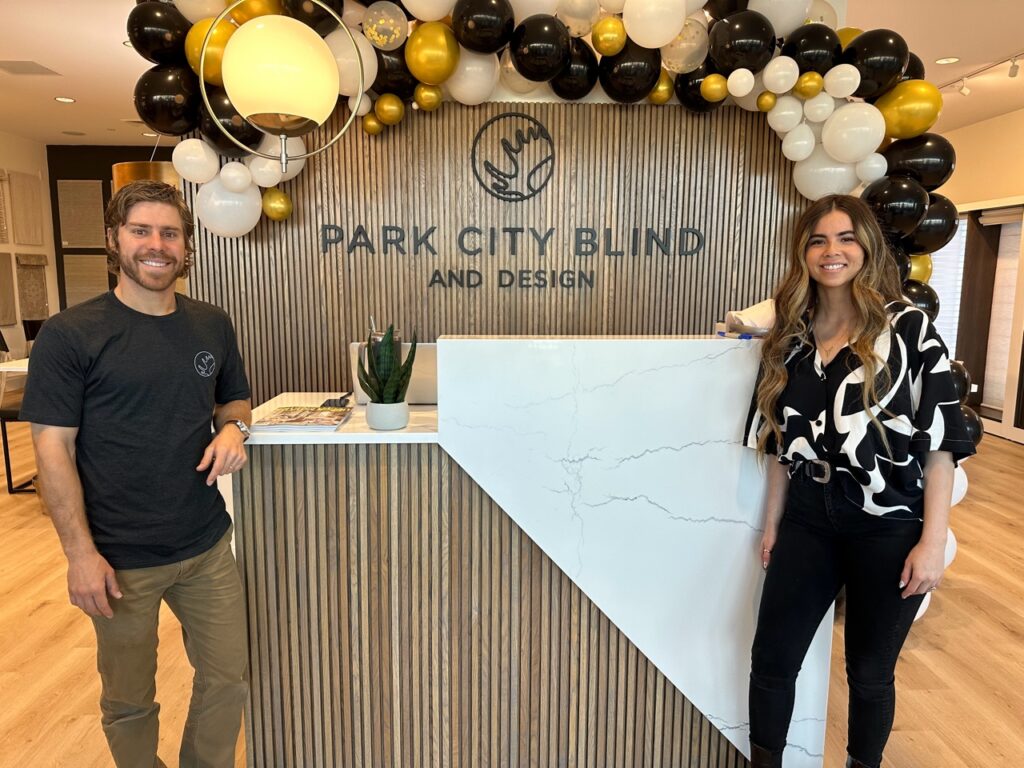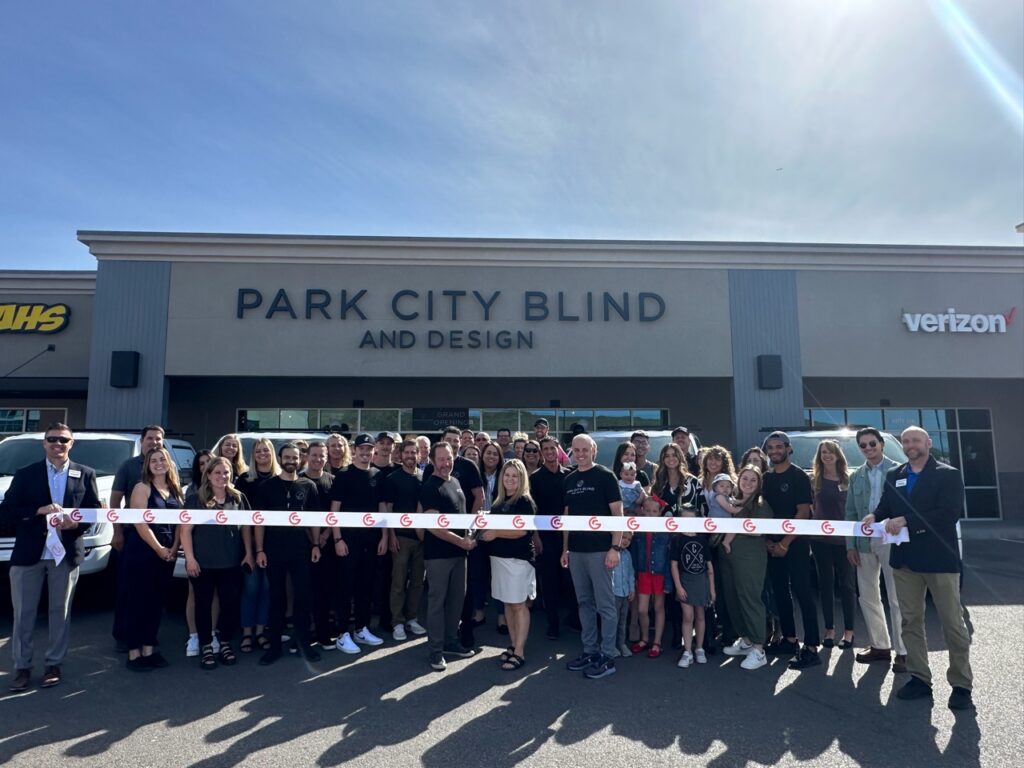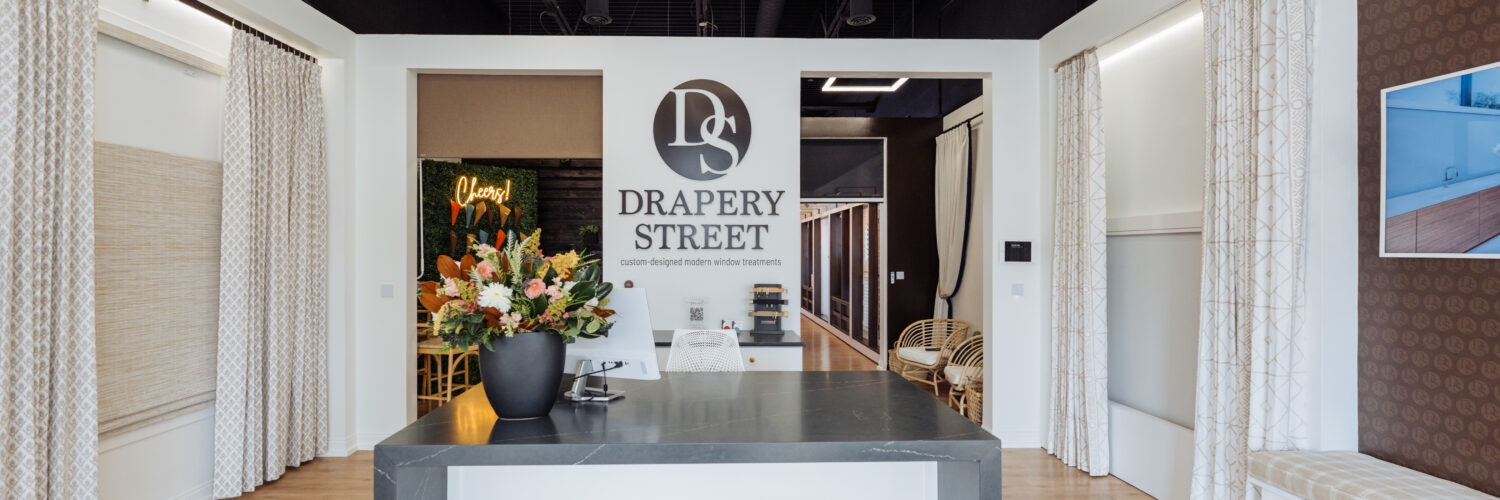We asked four owners from across the United States for their advice on this delicate decision.
Has the thought of operating out of your home become less and less appealing? While the convenience of working from home is tempting, it’s normal for growing pains to develop as your business does. The natural next step for most might be opening a showroom, but that comes with its own set of triumphs and tribulations. A physical location provides a unique way to engage with potential and existing clients, but it also introduces new elements into your business’ equation.

Caryn O’Sullivan, who opened Drapery Street’s first Indiana showroom in 2006, thinks of it this way: “If you’re changing from stay-at-home to showroom, you should see it in larger ticket sizes because clients feel more comfortable making larger purchases.” She’s found it “reduces the risk of our clients not being able to envision the finished/full-size product.”
For Park City Blind & Design’s Clint Olson, having a storefront gives his Utah business “more legitimacy, professionalism and better service for our clients—and a great work environment for our employees.” Clients are able to demo products they’re interested in, generate ideas and stay up to date with the latest in window treatments. An added benefit? Interior designers and builders can bring their customers into the space to make more informed selections.
The major deciding factor for New York City’s Glamour Decorating, run by Abraham, Shaun and Jon Yehuda, was once it “started selling more to retail customers and designers.” Opening a showroom furthered the company’s goal to “connect with and build our luxury clientele on a greater scale,” which “will allow us to take on more jobs and higher-value projects.”
O’Sullivan considers herself a visual person and “couldn’t envision a way to tell a whole home window treatment story through small samples and books.” She took inspiration from handbag designer 1154 Lill Studio and Build-A-Bear Workshop, where, she said, “you could see the full vision of what you wanted and make your own customizable choices along the way.”
According to Elizabeth Gerdes, founder of Georgia’s Stitch Above the Rest, the startup costs of opening—and maintaining—a showroom will always be more than you expect. “The beginning stages are a huge investment. Not just financially, but physically and emotionally … This is not something you give half your effort to and have it turn out perfectly,” she said. “You have to show up for everyone, from your designers to your builders and to your family and friends.”
One of the initial costs is a space’s down payment, but monthly expenses will come to include rent/mortage payment, utilities, payroll, cleaning and maintenance, insurance, inventory and marketing. “It’s an ongoing investment,” said Olson, as Park City is always updating, adding to and expanding its offerings. O’Sullivan shared the same sentiment, saying, “We are very conscious of building something we can edit because the industry is rapidly changing.”


On top of the employees you’ll hire to work in the showroom, what about those you’ll have to hire to prepare the space? First, a real estate agent or broker can help you find the perfect location, then a contractor can make your dreams into a reality. An interior designer will be able to help you infuse your brand identity throughout the space and add the finishing touches.
Remember that this transition doesn’t come quickly. Time is a huge consideration. Finding the right place is just the beginning. When everything is said and done, you have to take the time to put business practices in place to set yourself up for success from the get-go. While Yehuda said opening a showroom was the best investment Glamour Decorating ever made, “It was a substantial monetary investment … It was also a time investment, taking almost 10 months to build.”
Once the showroom is open for business, how do you get the word out? Social media is great, but it can only take your business as far as you’re willing to take it. To prepare, reach out to your local Chamber of Commerce, send invites to existing customers (and suggest they bring a friend) or circulate a press release to local publications.
For Drapery Street’s second showroom opening last year, the festivities started with a soft opening followed by a larger grand opening. On top of those events, the team chose to host a VIP event for designers, builders and other industry professionals to familiarize themselves with the new space. About six months after the grand opening, O’Sullivan said, “Traffic started picking up as folks got to know and recognize our brand.”
If you’re still on the fence, try reaching out to industry professionals in your area and visiting their properties. It doesn’t hurt to check out the competition and see some of your potential ideas in practice. O’Sullivan traveled the country to explore different showrooms that inspired her and really thought about the experience a client will have when they visit a Drapery Street showroom.
In most cases, the rewards outweigh the repercussions. Gerdes said, “Though this is one of the toughest things I’ve ever taken on, I am so happy I did it. After years of dreaming about it, I wish I had done it sooner. The pressure it takes off of me trying to do everything myself, having people help me, having a place for my clients to come visit, all of it … I know with a little more time and energy, we will have this place running smoothly for years to come.”
Meet the Experts

Elizabeth Gerdes Stitch Above the Rest, Woodstock, Georgia StitchAboveTheRest.com @stitchabovetherest

Jonathan Yehuda Glamour Decorating, New York, New York Glamour-Decorating.com @glamourdecorating

Clint Olson Park City Blind & Design, Park City and St. George, Utah ParkCityBlind.com @parkcityblindanddesign

Caryn O’Sullivan Drapery Street, Carmel and Fishers, Indiana DraperyStreet.com @draperystreet




